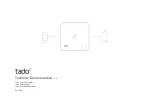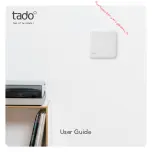
11
b) Operating principle
The ‘FS20 STR’ wireless thermostat measures the current room temperature at its installation
position and compares it to the target temperature (set either by time program or manually).
The difference is used to calculate how the FS20 switching units (the ‘FS20 ST-2’ wireless
switch socket, for example) need to be switched on or off to achieve the desired temperature.
The time program can be set to meet your individual needs, for example to switch between two
different temperatures according to the use of the room (day and night temperatures).
The reversible operating mode means that heating or cooling (or also ventilating) appliances
can be controlled.
A safety function ensures the appliance cannot continue to operate uncontrolled
in case of a wireless thermostat malfunction or radio connection failure. The
consumer is switched off 8 minutes after the last radio transmitted wireless
protocol is received.
c) FS20 address system
The radio transmission is secured by an extensive coding system to allow multiple FS20
components (which also includes the ‘FS20 STR’ wireless thermostat and the ‘FS20 ST-2’
wireless switch socket) to be operated simultaneously.
The code consists of a ‘house code’ and an ‘address’. The house code serves to differentiate
between multiple FS20 systems operating simultaneously. This means that your neighbour
can use the same wireless control system and the two systems will not interfere with each other
(provided that the house code has been programmed differently).
The house code consists of 8 base-four digits (1,2,3,4) meaning that in total 4
8
(= 65536)
different house codes are possible. This makes it extremely unlikely that your neighbour will
use the same house code (assuming that you do not use ‘simple’ house codes).
The second part of the code is the so-called ‘address’. Every address is a four-digit number
made up of the following 16 numbers: 11, 12, 13, 14, 21, 22, 23, 24, 31, 32, 33, 34, 41, 42, 43,
44
Example:
Address 11 22












































